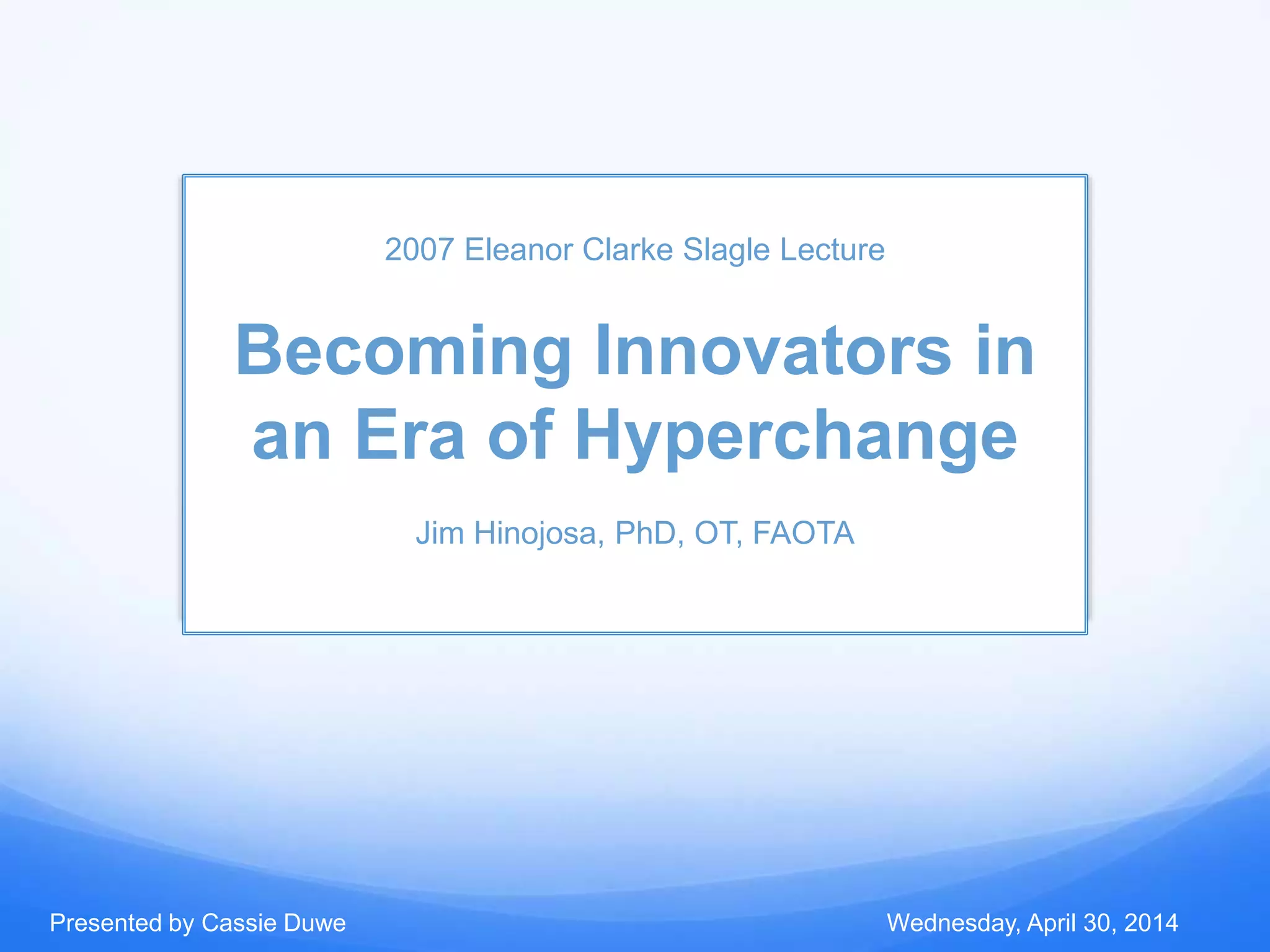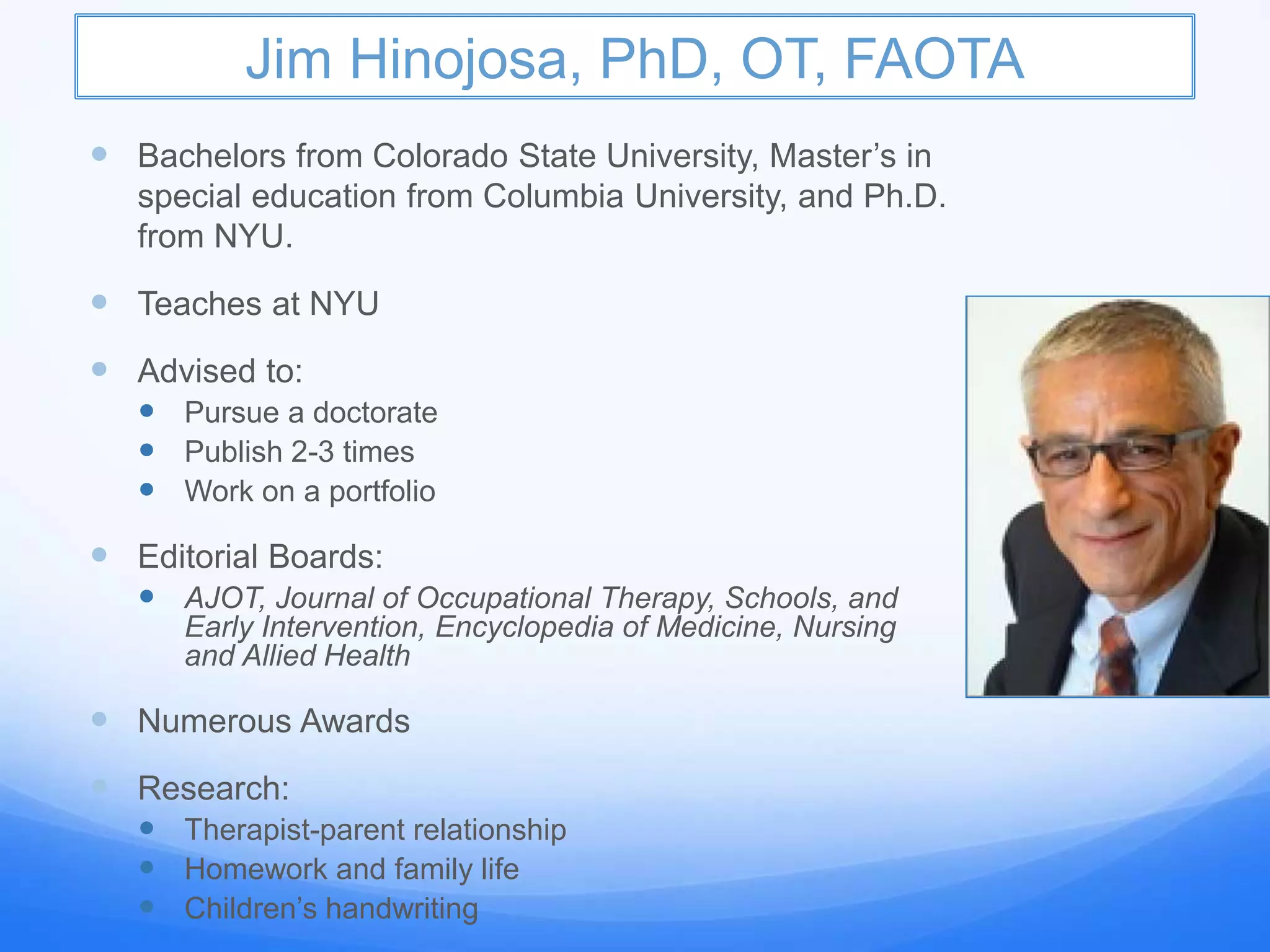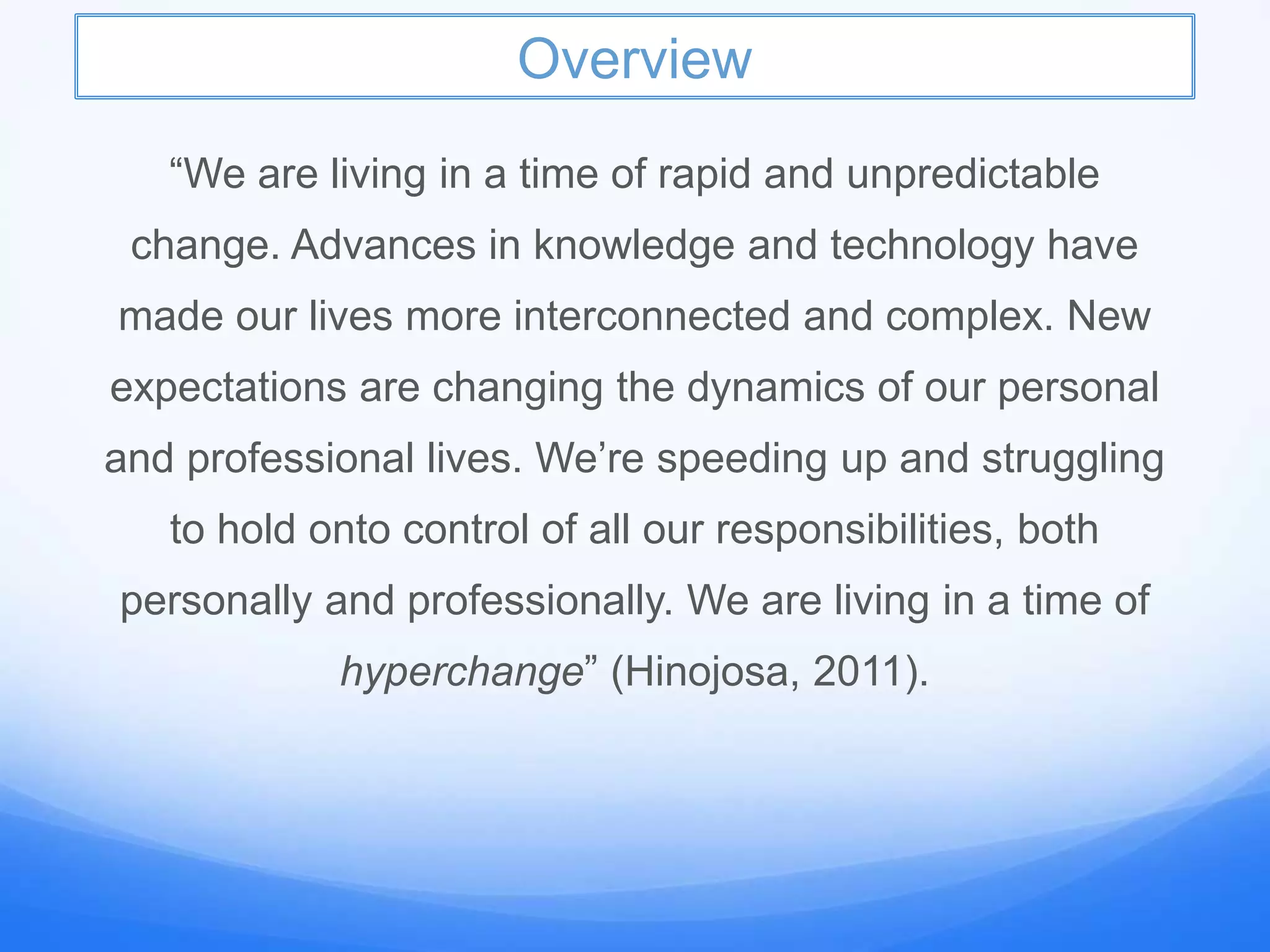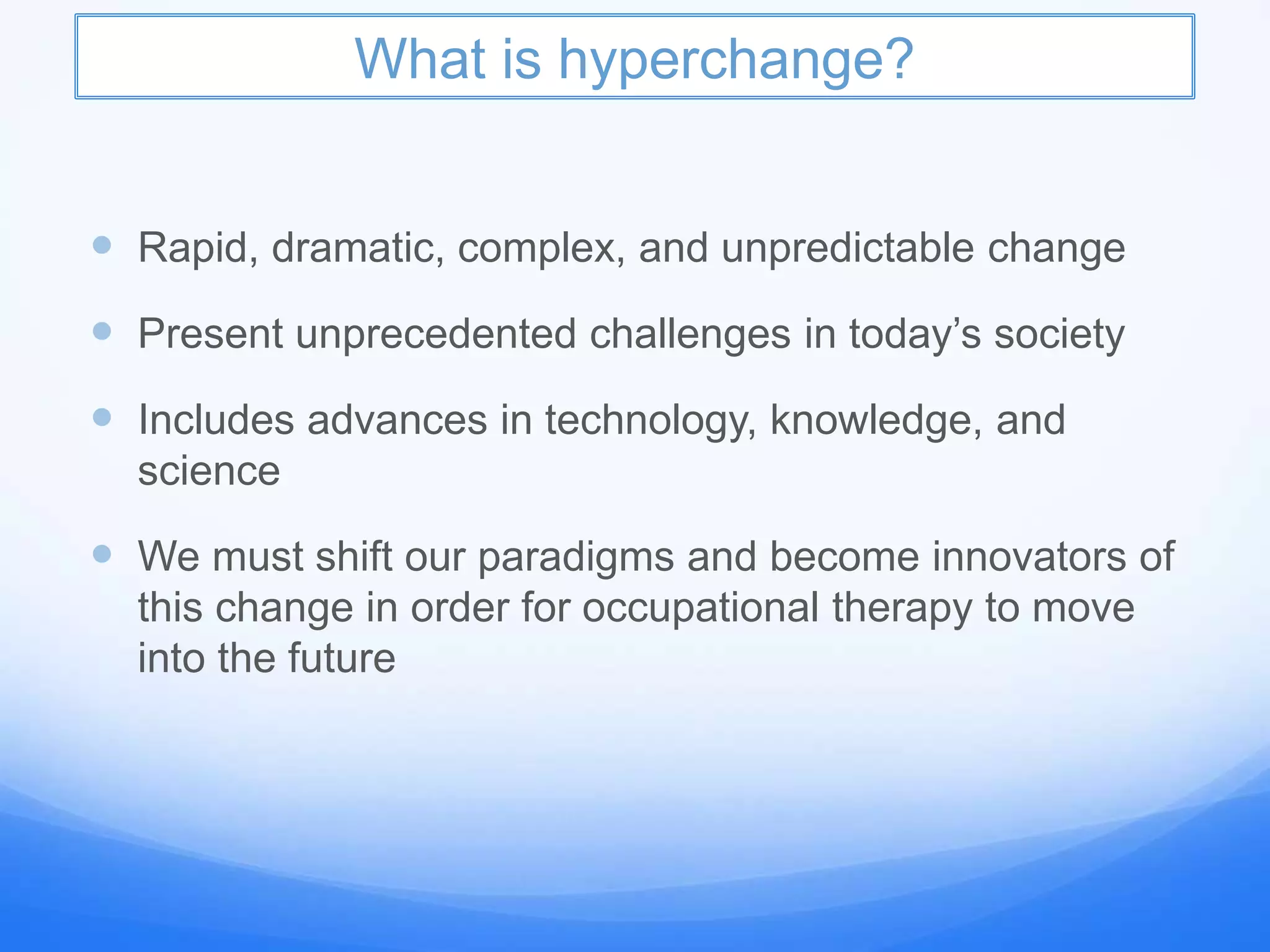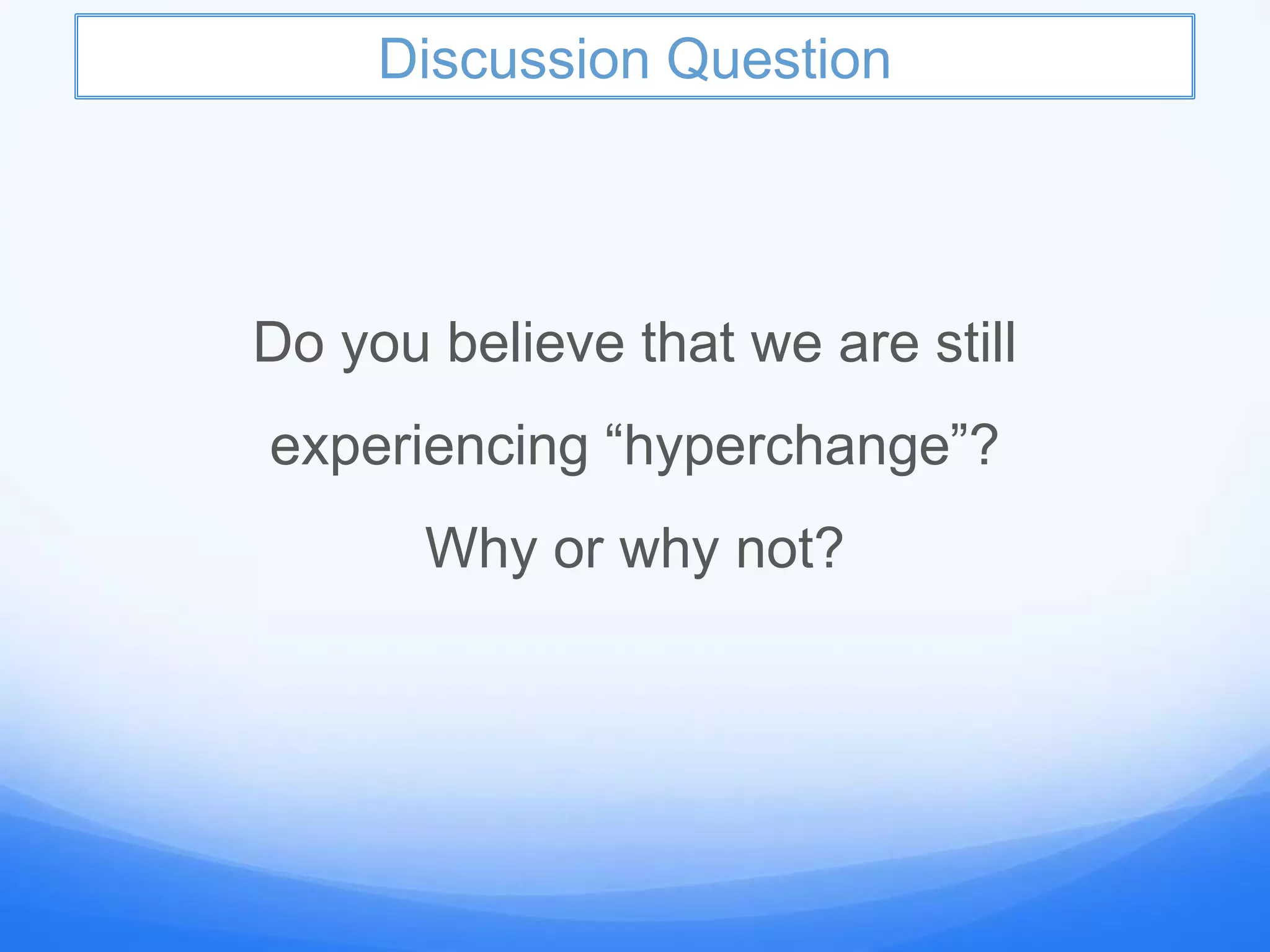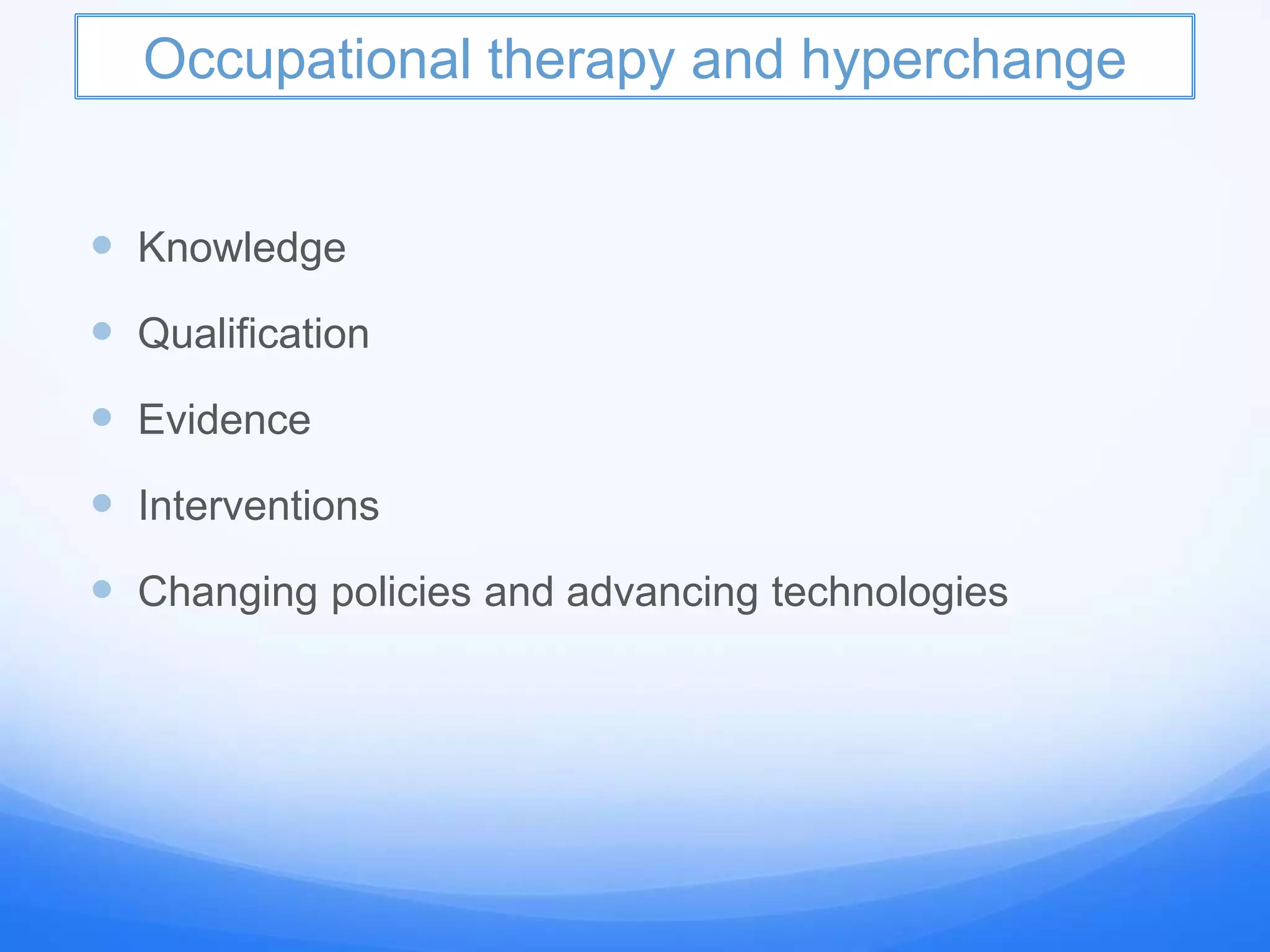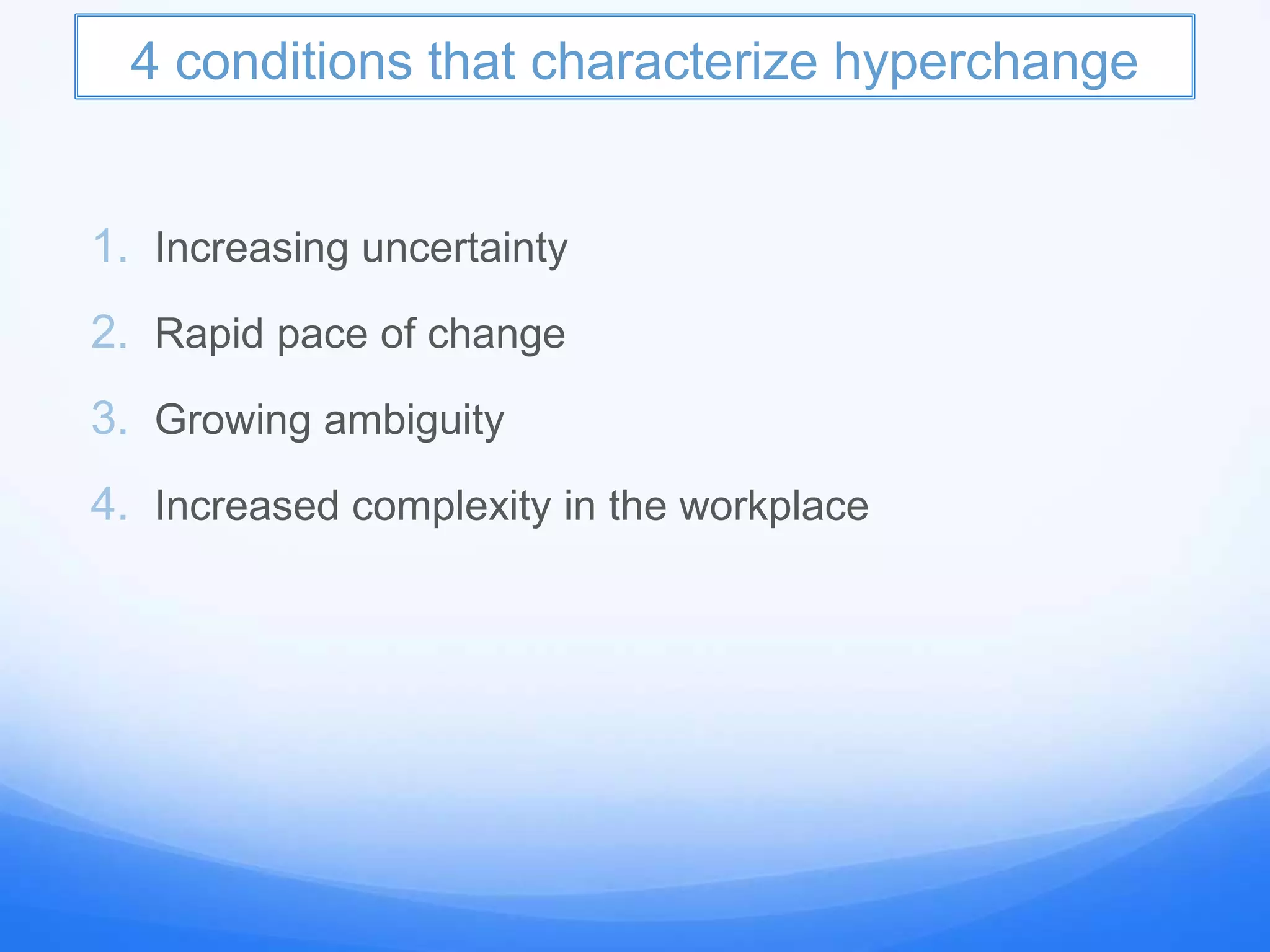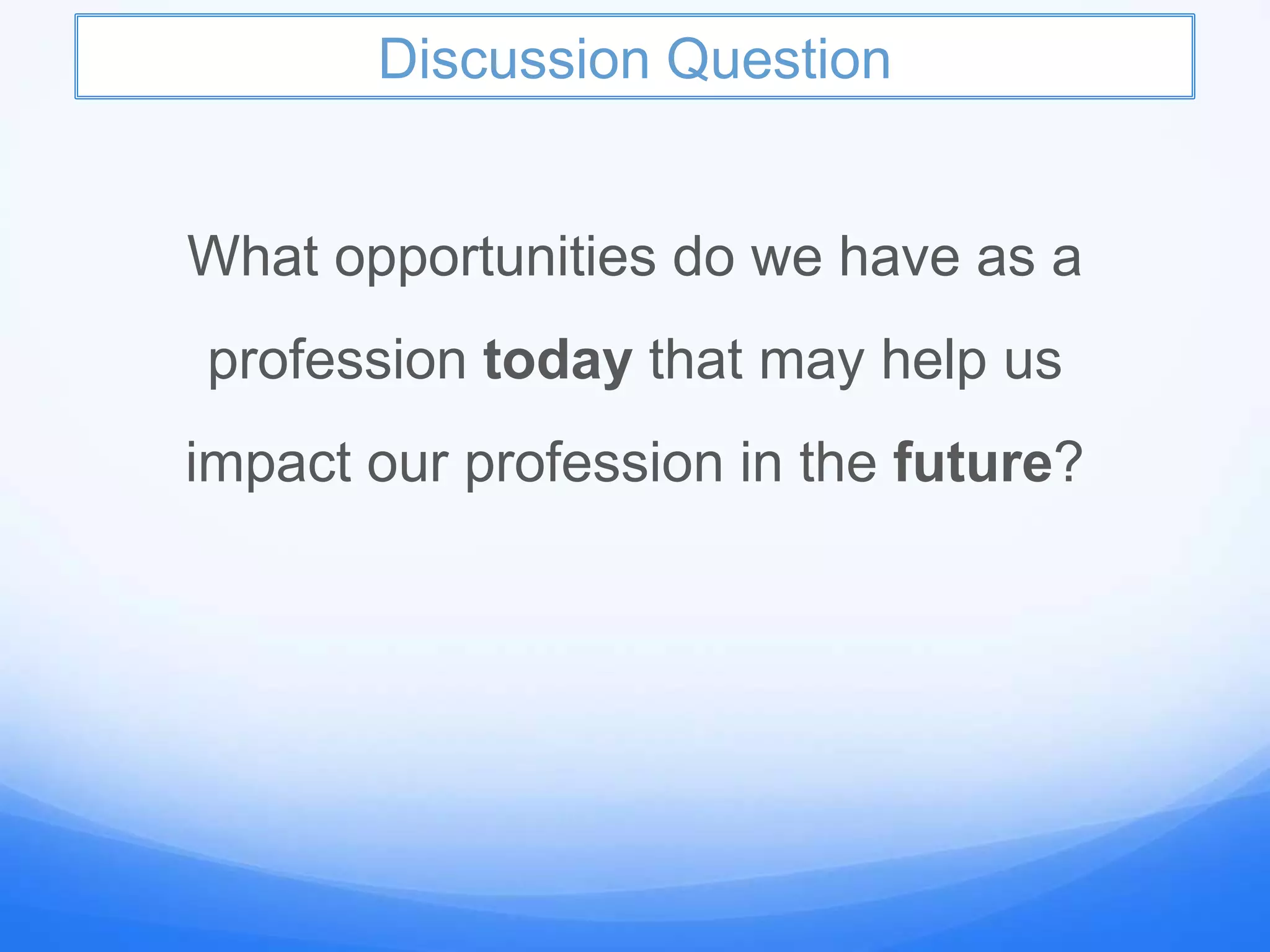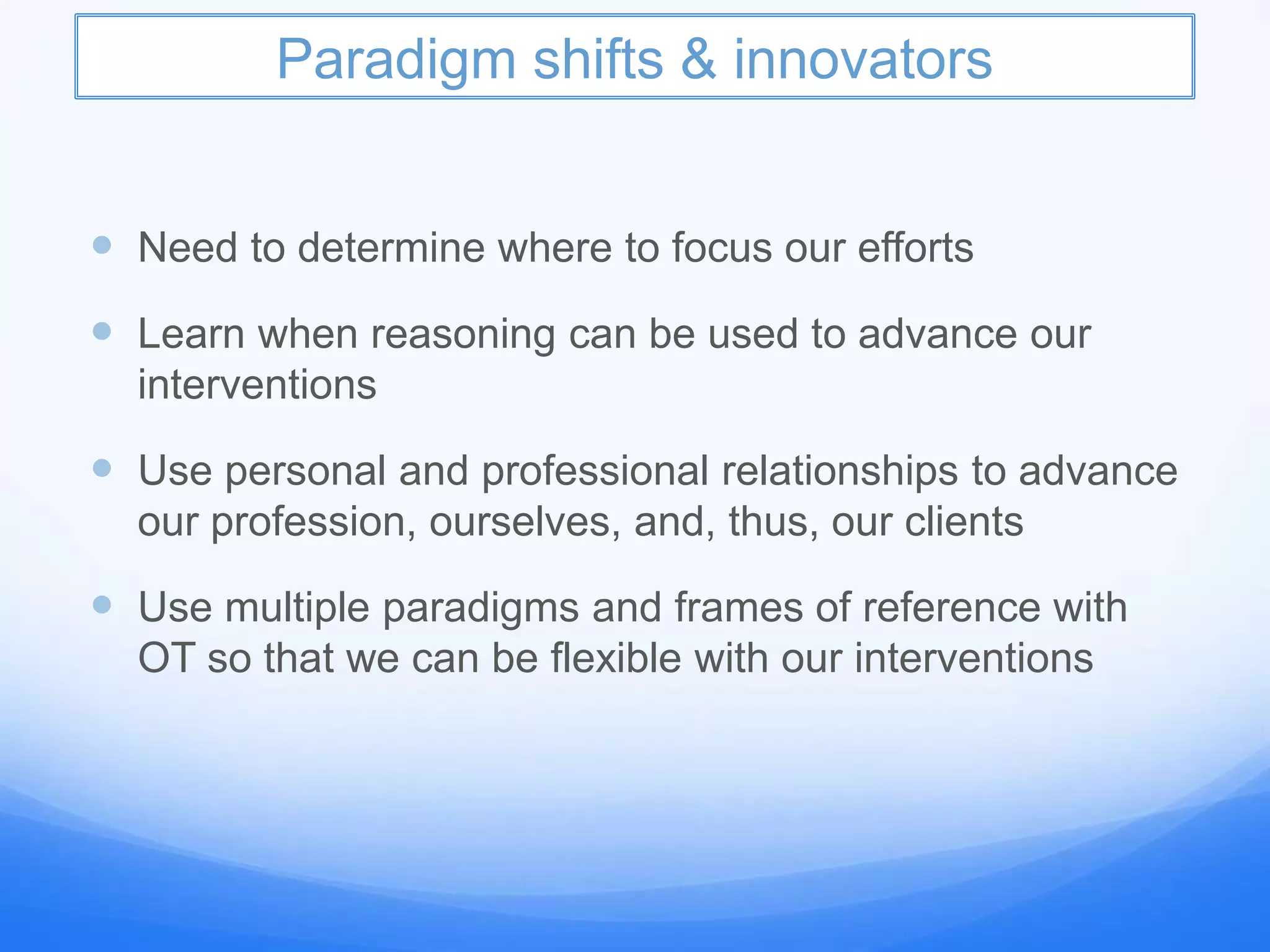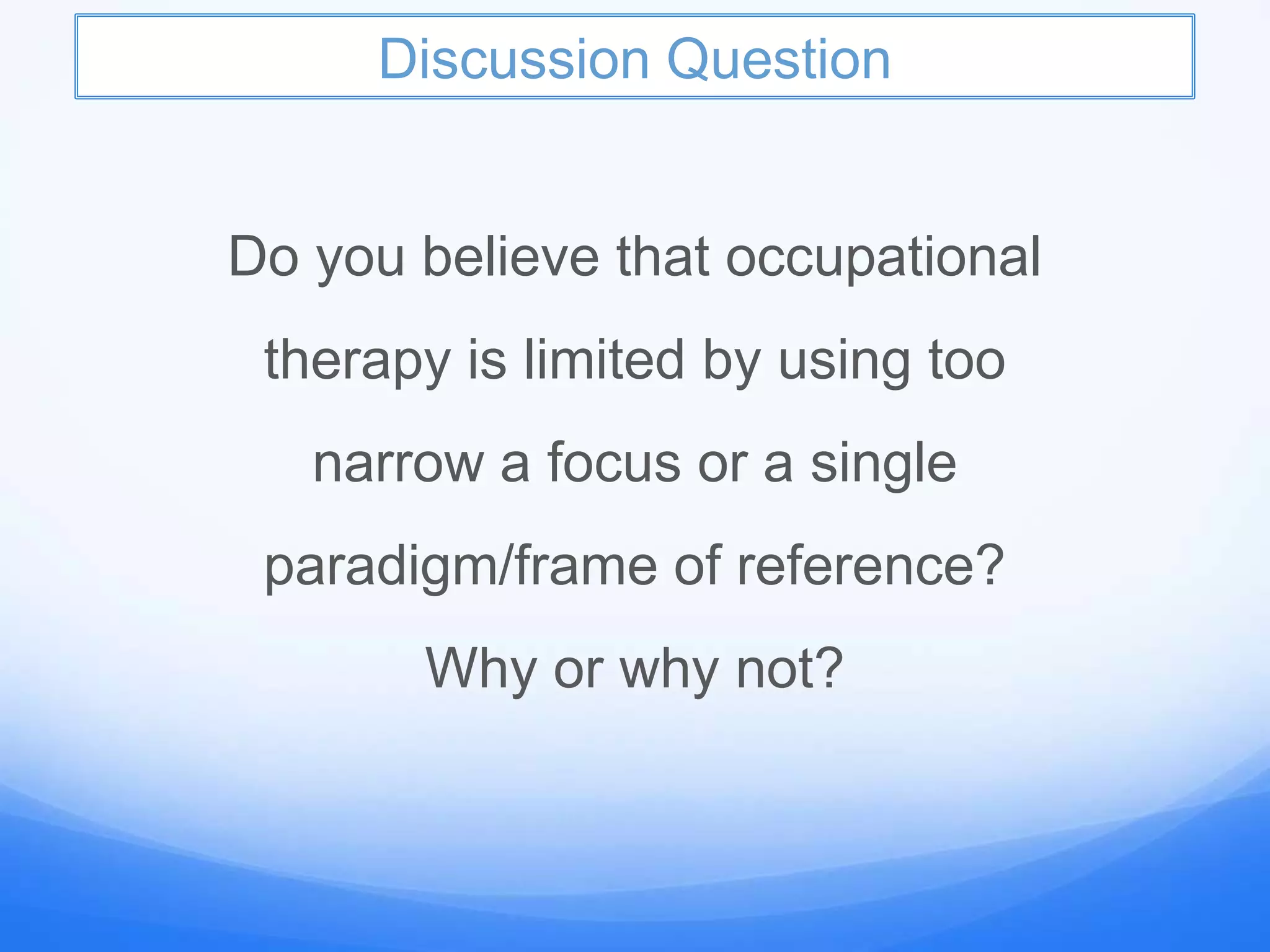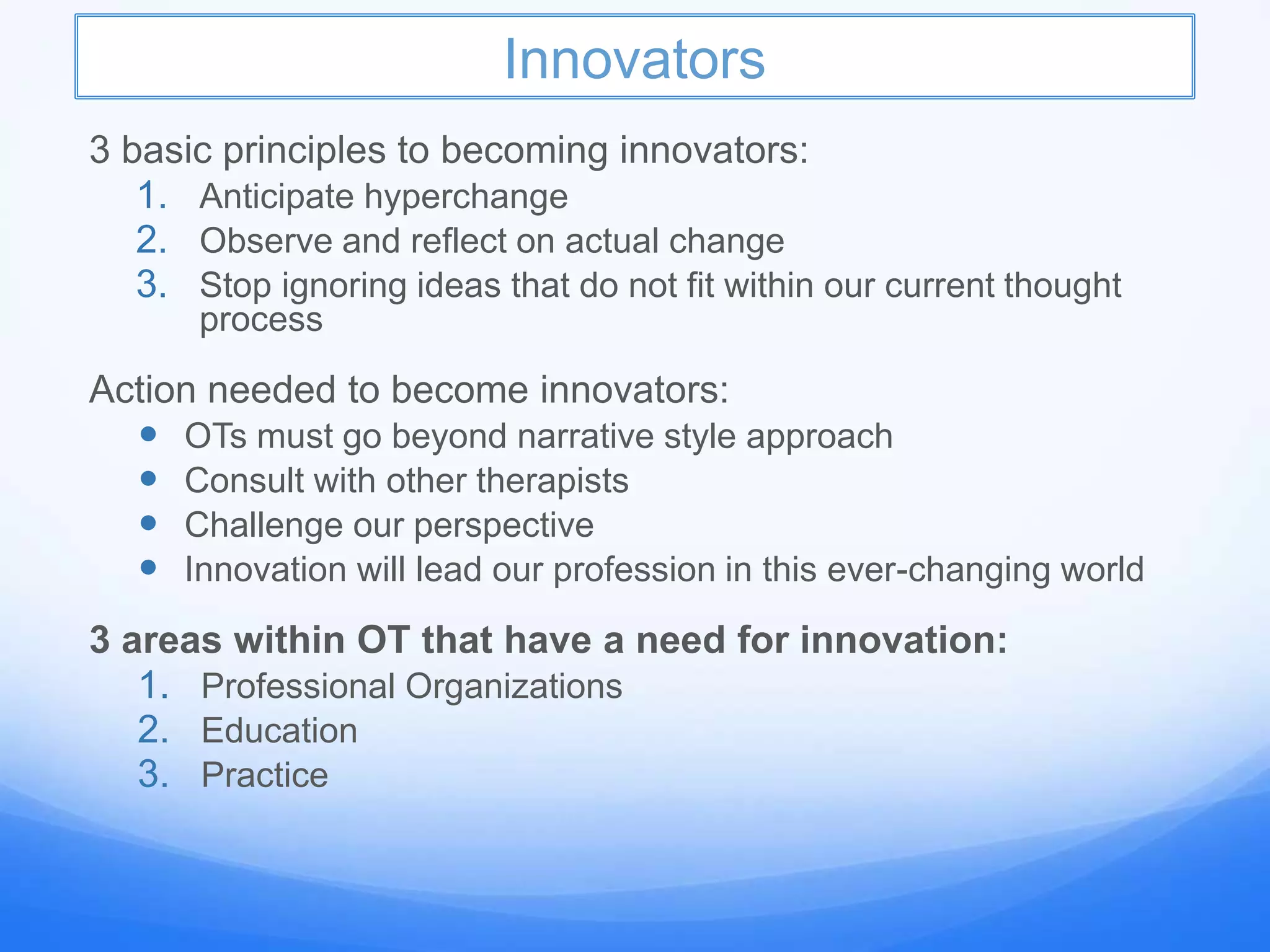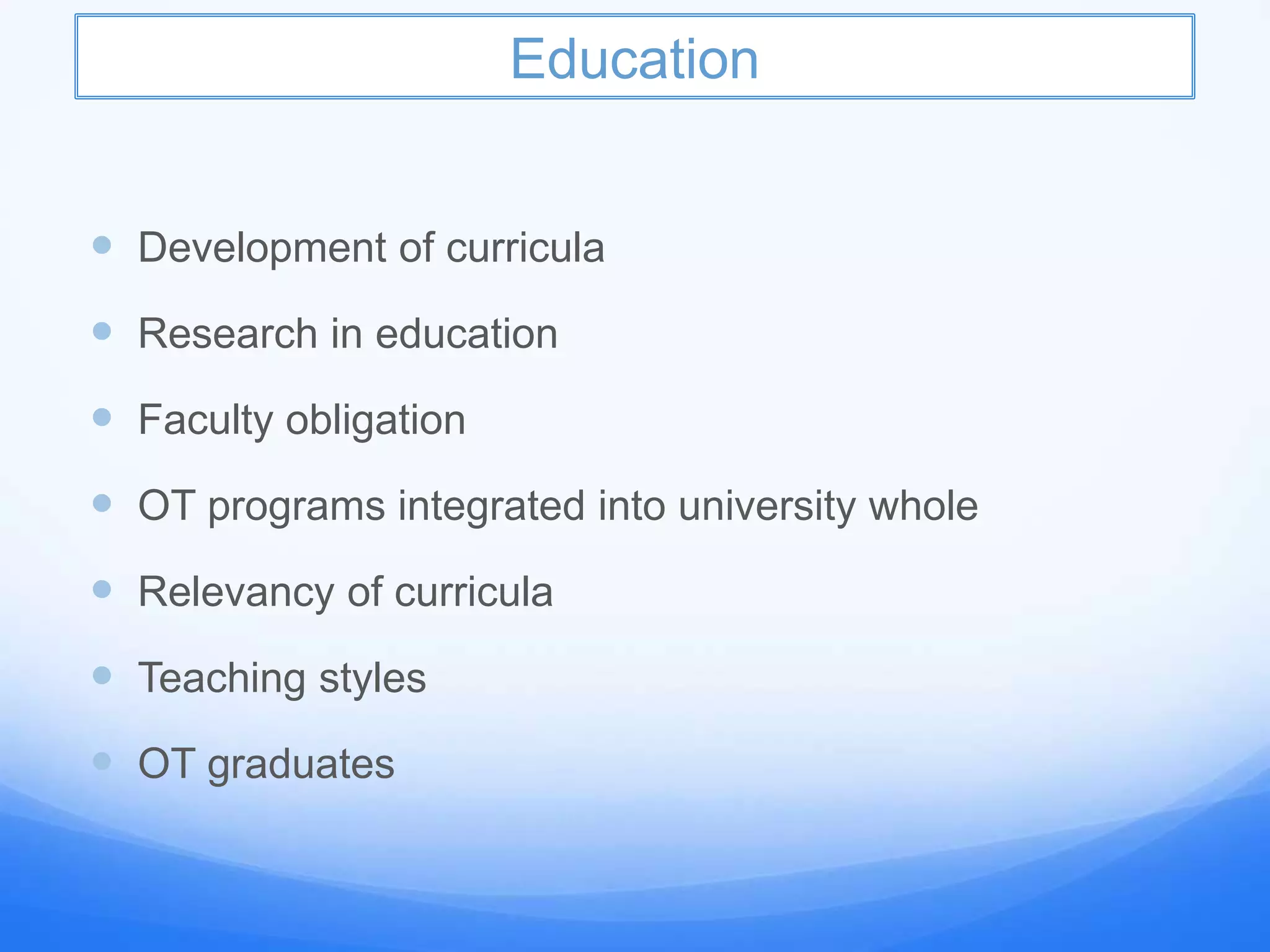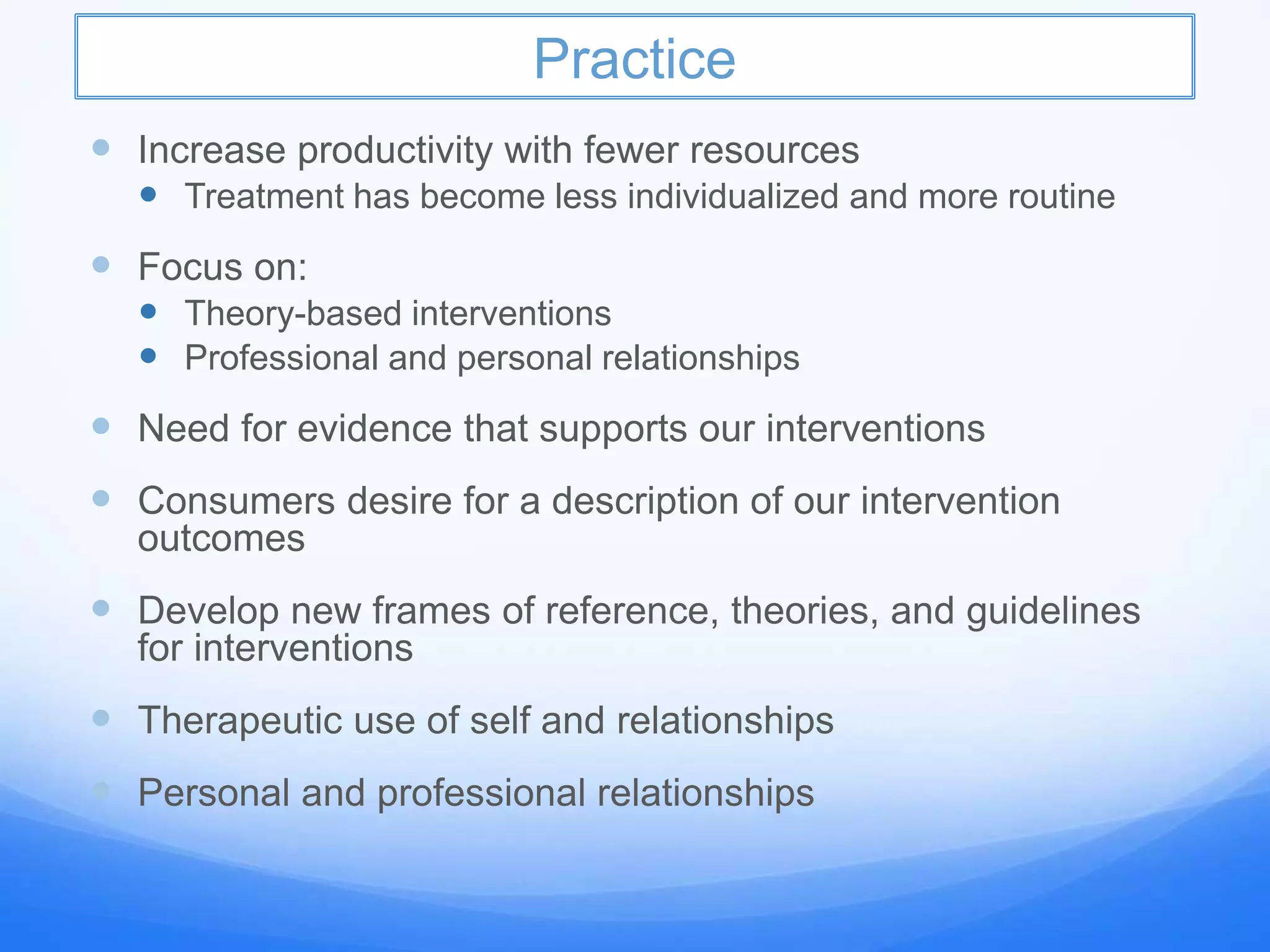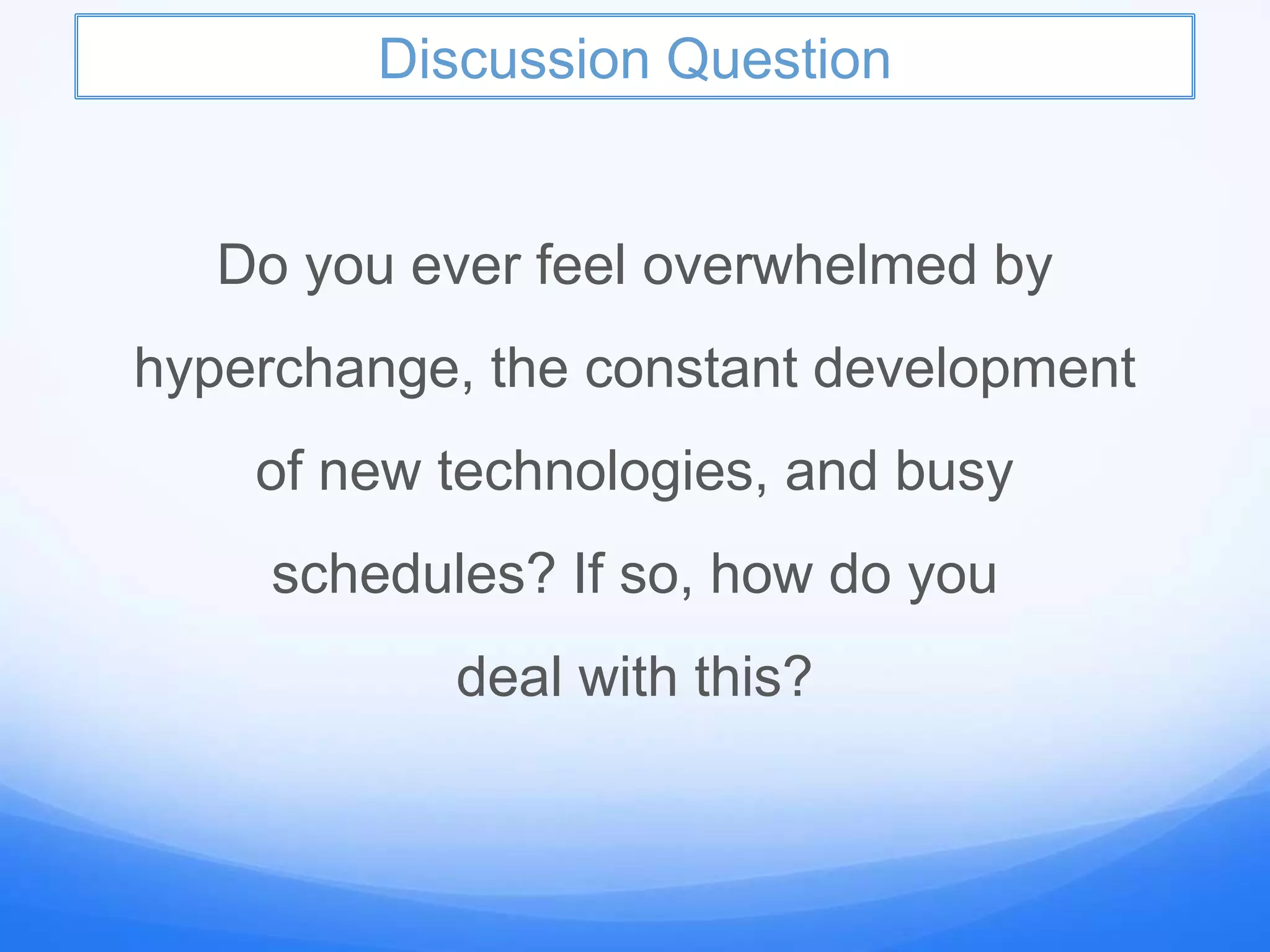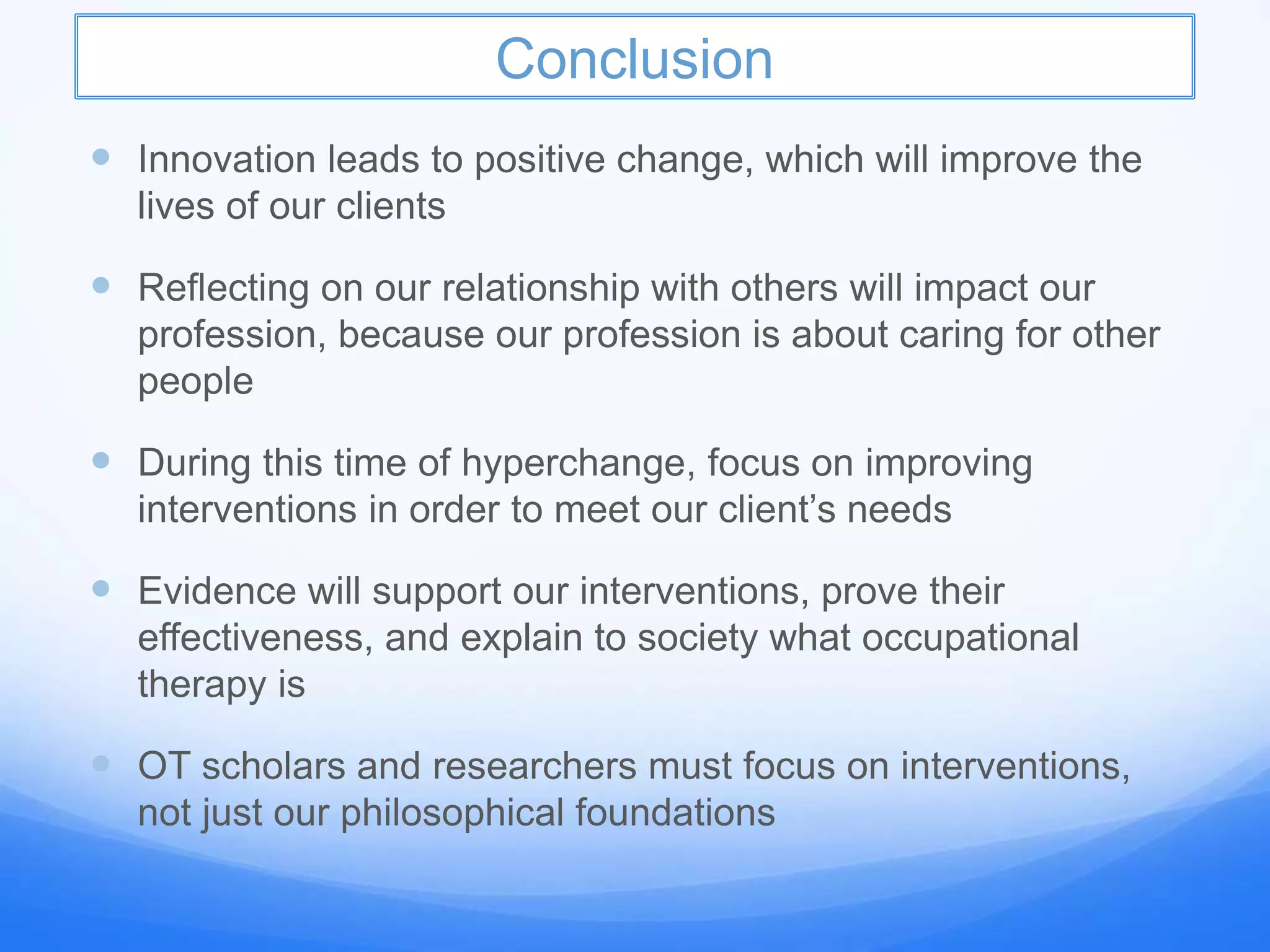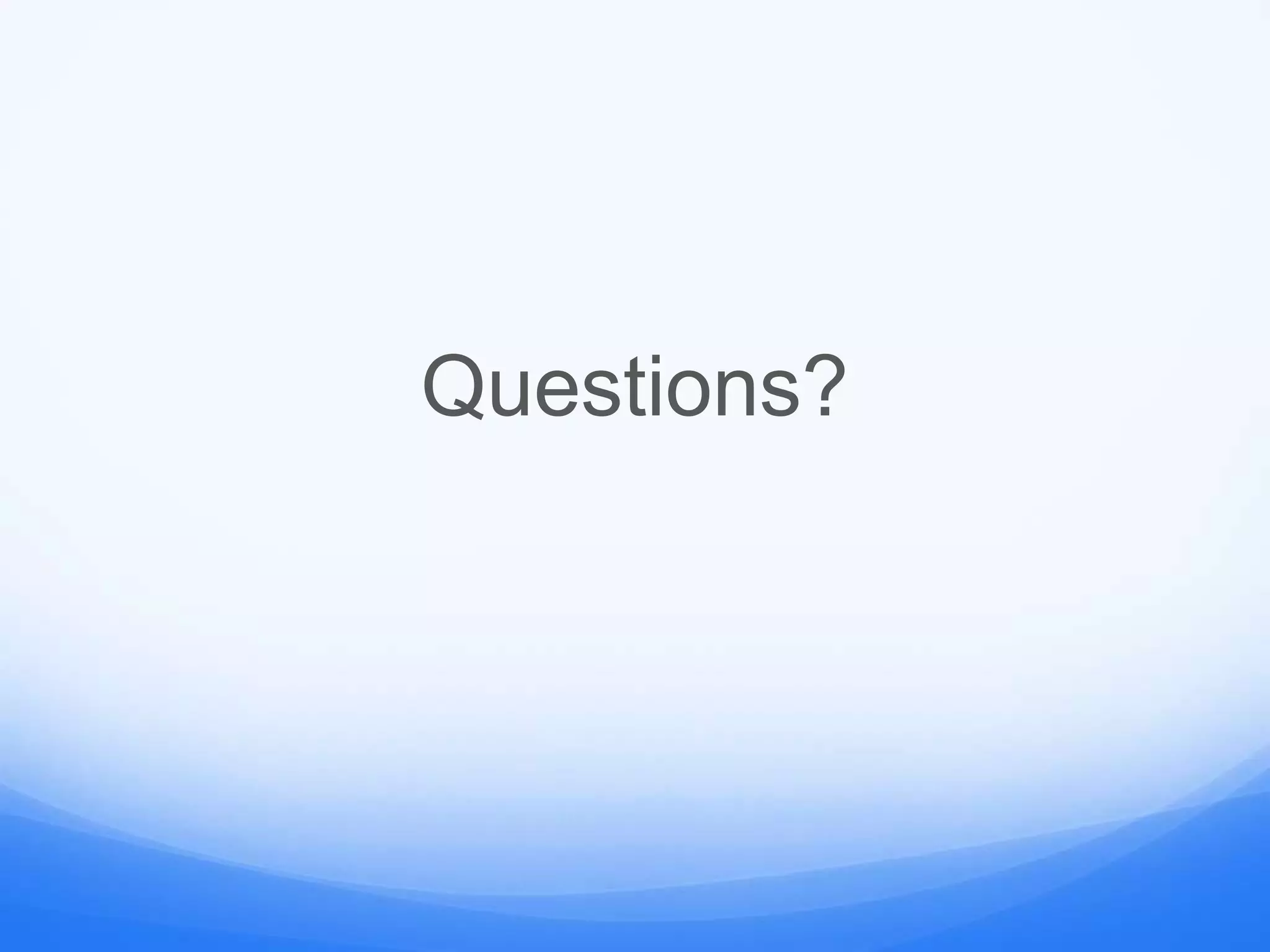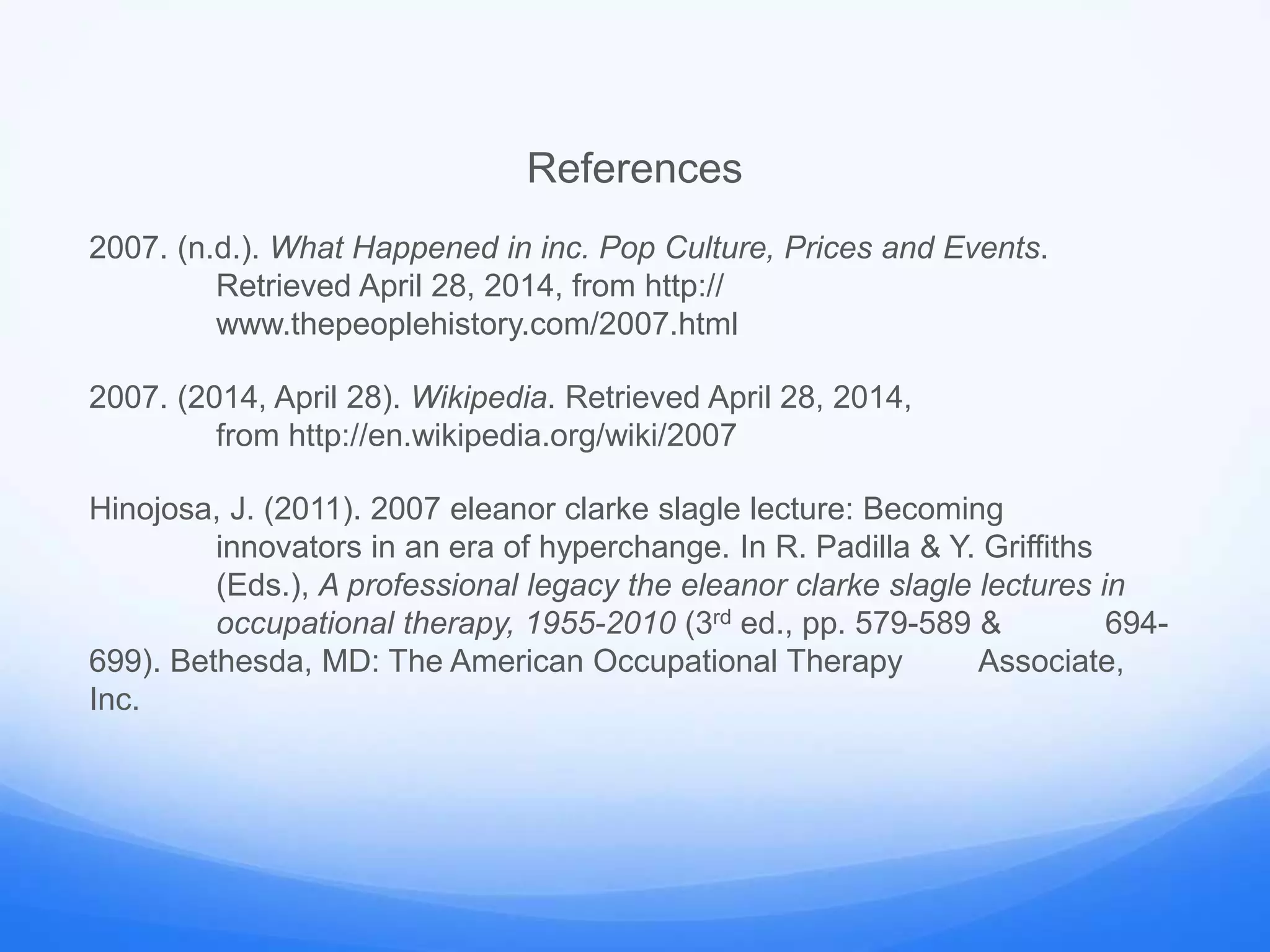This document summarizes Jim Hinojosa's 2007 Eleanor Clarke Slagle Lecture on occupational therapy practitioners becoming innovators in an era of rapid change or "hyperchange". Hinojosa argues that the profession must shift its paradigms and thinking to deal with the increasing uncertainty, pace of change, ambiguity, and complexity characterizing the modern workplace. He identifies three key areas - professional organizations, education, and practice - that require innovation. Hinojosa urges occupational therapists to anticipate change, reflect on innovations, and consider new ideas outside their typical thought processes in order to lead the profession successfully through hyperchange.
